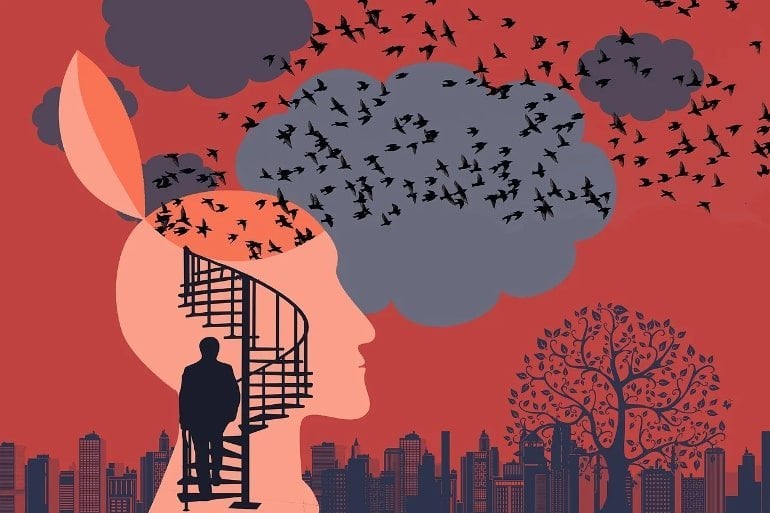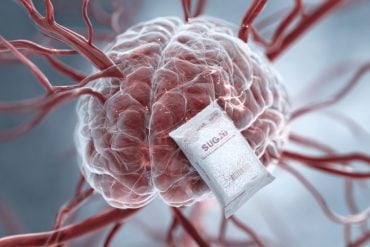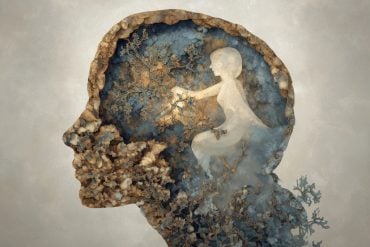Summary: The more vividly we imagine something, the more likely we are to believe it’s real, a new study reports. Researchers found the brain encodes the vividness of perceived and real stimuli in a similar manner, resulting in a confusion between reality and imagination.
Source; UCL
The more vividly a person imagines something, the more likely it is that they believe it’s real, finds a new study by University College London researchers.
The research, published in Nature Communications, involved more than 600 participants who took part in an online experiment, where they were asked to imagine images of alternating black and white lines while looking at a computer screen.
After they imagined a stimulus, participants then had to report how vividly they were able to visualize it.
Then, without the participant’s knowledge, at the very end of the experiment, an actual stimulus with the same features as those the participant was imagining was gradually faded in to view on the computer screen. Participants then had to rate how vividly they imagined the stimulus and described whether what they saw was real or imagined.
The results showed that the imagined and perceived stimuli became intermixed in the participants’ minds. For example, when a real stimulus was faded in, participants believed that their imagination had simply become more vivid.
Meanwhile, when imagining more vividly, the participants were more likely to believe that they had seen a real stimulus—even when nothing had been presented to them.
Lead author, Dr. Nadine Dijkstra (Wellcome Center for Human Neuroimaging at UCL) said, “In daily life, we often imagine things that are not there. For example, if we are asked whether a cat’s ears are round or pointy, we might inspect a mental image in our mind’s eye to answer the question.
“Neuroscience has discovered that imagination and perception rely on overlapping brain circuits. We were interested in whether this overlap leads to confusion between the two: given that the same circuits are involved—how can we be sure what is real and what is not?”
The researchers used a computer model to establish whether the pattern of results was consistent with the theory that people judge whether something is real or imagined, based on how vividly they experience it.

The team validated this model using neuroimaging, showing that the brain encodes the strength or vividness of real and imagined stimuli in a similar manner—confusing reality and imagination.
Dr. Dijkstra, said, “Our results suggest that, counterintuitively, there is no categorical difference between imagination and reality; instead, it is a difference in degree, not in kind.”
Senior author, Professor Stephen Fleming (UCL Psychology & Language Sciences, Wellcome Center for Human Neuroimaging at UCL, and Max Planck UCL Center for Computational Psychiatry & Aging Research) added, “Normally imagination is relatively weak, and so we don’t confuse it with reality. But if imagination becomes strong or vivid enough, it may get treated as real.
“In near-future scenarios, in which brain stimulation or virtual reality technology become novel sources of strong sensory signals, our findings imply it may be more difficult than we think to tell apart reality and unreality.”
About this perception research news
Author: Press Office
Source: UCL
Contact: Press Office – UCL
Image: The image is in the public domain
Original Research: Open access.
“Subjective signal strength distinguishes reality from imagination” by Nadine Dijkstra et al. Nature Communications
Abstract
Subjective signal strength distinguishes reality from imagination
Humans are voracious imaginers, with internal simulations supporting memory, planning and decision-making. Because the neural mechanisms supporting imagery overlap with those supporting perception, a foundational question is how reality and imagination are kept apart.
One possibility is that the intention to imagine is used to identify and discount self-generated signals during imagery. Alternatively, because internally generated signals are generally weaker, sensory strength is used to index reality.
Traditional psychology experiments struggle to investigate this issue as subjects can rapidly learn that real stimuli are in play.
Here, we combined one-trial-per-participant psychophysics with computational modelling and neuroimaging to show that imagined and perceived signals are in fact intermixed, with judgments of reality being determined by whether this intermixed signal is strong enough to cross a reality threshold.
A consequence of this account is that when virtual or imagined signals are strong enough, they become subjectively indistinguishable from reality.






